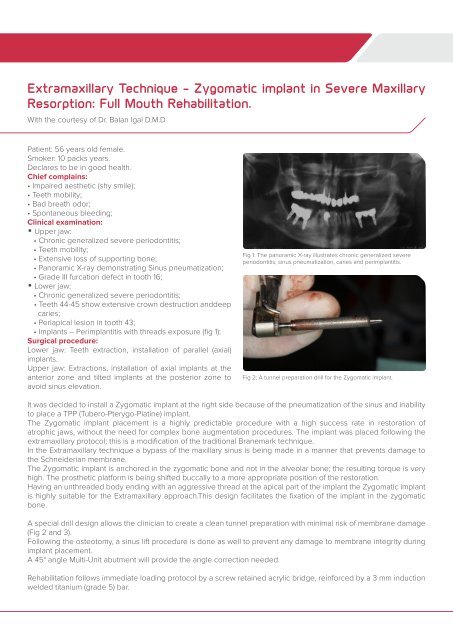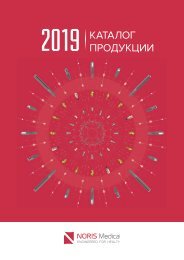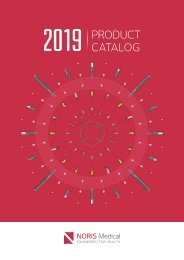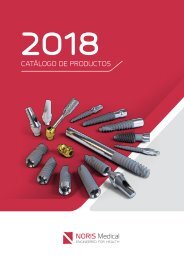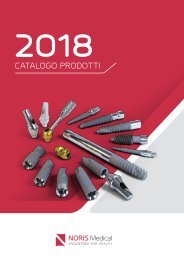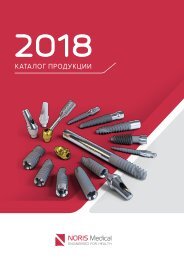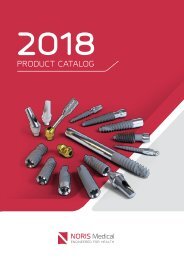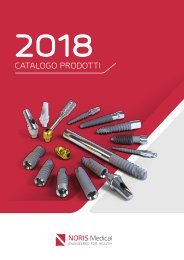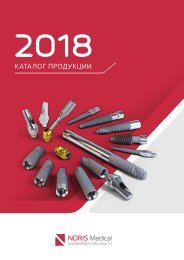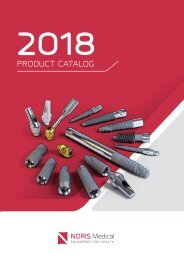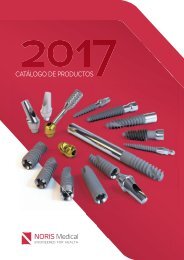Create successful ePaper yourself
Turn your PDF publications into a flip-book with our unique Google optimized e-Paper software.
Extramaxillary Technique - Zygomatic implant in Severe Maxillary<br />
Resorption: Full Mouth Rehabilitation.<br />
With the courtesy of Dr. Balan Igal D.M.D<br />
Patient: 56 years old female.<br />
Smoker: 10 packs years.<br />
Declares to be in good health.<br />
Chief complains:<br />
• Impaired aesthetic (shy smile);<br />
• Teeth mobility;<br />
• Bad breath odor;<br />
• Spontaneous bleeding;<br />
Clinical examination:<br />
• Upper jaw:<br />
• Chronic generalized severe periodontitis;<br />
• Teeth mobility;<br />
• Extensive loss of supporting bone;<br />
• Panoramic X-ray demonstrating Sinus pneumatization;<br />
• Grade III furcation defect in tooth 16;<br />
• Lower jaw:<br />
• Chronic generalized severe periodontitis;<br />
• Teeth 44-45 show extensive crown destruction anddeep<br />
caries;<br />
• Periapical lesion in tooth 43;<br />
• Implants – Perimplantitis with threads exposure (fig 1);<br />
Surgical procedure:<br />
Lower jaw: Teeth extraction, installation of parallel (axial)<br />
implants.<br />
Upper jaw: Extractions, installation of axial implants at the<br />
anterior zone and tilted implants at the posterior zone to<br />
avoid sinus elevation.<br />
Fig 1: The panoramic X-ray illustrates chronic generalized severe<br />
periodontitis, sinus pneumatization, caries and perimplantitis.<br />
Fig 2: A tunnel preparation drill for the Zygomatic implant.<br />
It was decided to install a Zygomatic implant at the right side because of the pneumatization of the sinus and inability<br />
to place a TPP (Tubero-Pterygo-Platine) implant.<br />
The Zygomatic implant placement is a highly predictable procedure with a high success rate in restoration of<br />
atrophic jaws, without the need for complex bone augmentation procedures. The implant was placed following the<br />
extramaxillary protocol; this is a modification of the traditional Branemark technique.<br />
In the Extramaxillary technique a bypass of the maxillary sinus is being made in a manner that prevents damage to<br />
the Schneiderian membrane.<br />
The Zygomatic implant is anchored in the zygomatic bone and not in the alveolar bone; the resulting torque is very<br />
high. The prosthetic platform is being shifted buccally to a more appropriate position of the restoration.<br />
Having an unthreaded body ending with an aggressive thread at the apical part of the implant the Zygomatic implant<br />
is highly suitable for the Extramaxillary approach.This design facilitates the fixation of the implant in the zygomatic<br />
bone.<br />
A special drill design allows the clinician to create a clean tunnel preparation with minimal risk of membrane damage<br />
(Fig 2 and 3).<br />
Following the osteotomy, a sinus lift procedure is done as well to prevent any damage to membrane integrity during<br />
implant placement.<br />
A 45° angle Multi-Unit abutment will provide the angle correction needed.<br />
Rehabilitation follows immediate loading protocol by a screw retained acrylic bridge, reinforced by a 3 mm induction<br />
welded titanium (grade 5) bar.


